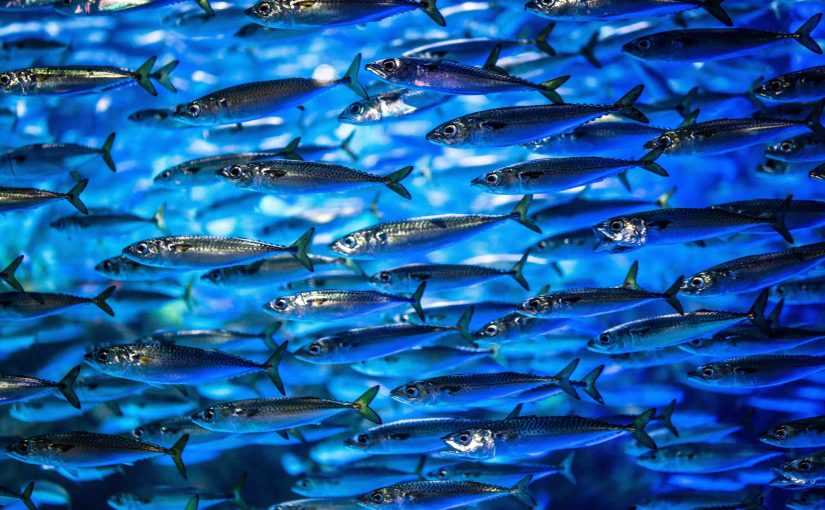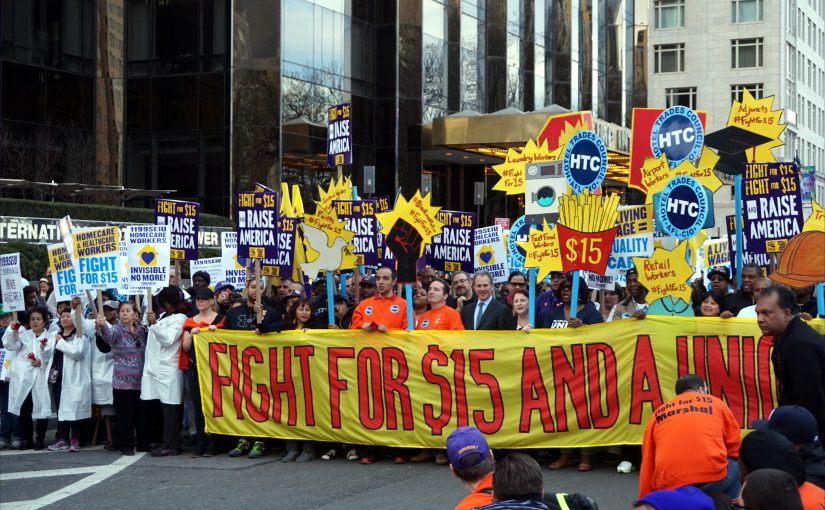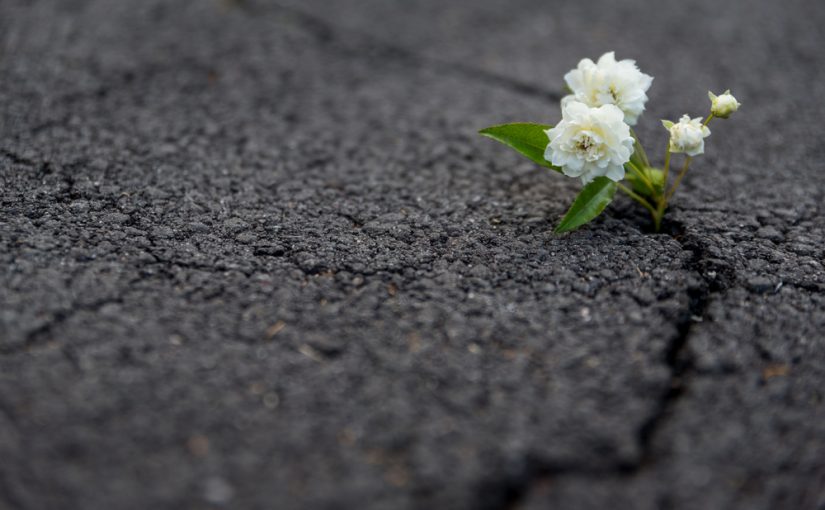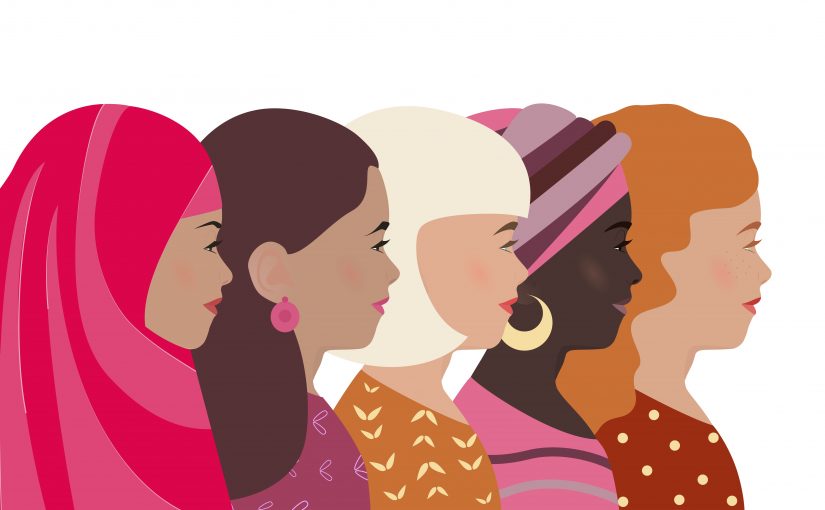
From the air we breathe to the food we eat, research shows that plastic is everywhere and is wreaking havoc on our health and planet. With hope on the horizon as new laws banning single-use plastic take effect, what fundamentally must change is to get at the root of our throwaway culture. In Thicker Than Water: The Quest for Solutions to the Plastic Crisis, journalist Erica Cirino brings readers on a journey around the world, highlighting the scientists and activists telling the real story of the plastic crisis.
From Thicker Than Water: The Quest for Solutions to the Plastic Crisis by Erica Cirino. Copyright © 2021 by the author. Reproduced by permission of Island Press, Washington, D.C.
We are no better protected from plasticized air outdoors than we are indoors. Plastic fibers, fragments, foam, and films are perpetually floating into and free-falling down on us from the atmosphere. Rain flushes micro- and nanoplastics out of the sky back to Earth. Plastic-filled snow is accumulating in urban areas like Bremen, Germany, and remote regions like the Arctic and Swiss Alps alike.
Wind and storms carry particles shed from plastic items and debris through the air for dozens, even hundreds, of miles before depositing them back on Earth. Dongguan, China; Paris, France; London, England; and other metropolises teeming with people are enveloped in air perpetually permeated by tiny plastic particles small enough to lodge themselves in human lungs.
Urban regions are especially replete with what scientists believe could be one of the most hazardous varieties of particulate pollution: plastic fragments, metals, and other materials that have shed off synthetic tires as a result of the normal friction caused by brake pads and asphalt roads, and from enduring weather and time. Like the plastic used to manufacture consumer items and packaging, synthetic tires may contain any number of a manufacturer’s proprietary blend of poisons meant to improve a plastic product’s appearance and performance.
Tire particles from the world’s billions of cars, trucks, bikes, tractors, and other vehicles escape into air, soil, and water bodies. Scientists are just beginning to understand the grave danger: In 2020, Washington State researchers determined that the presence of 6PPD-quinone, a byproduct of rubber-stabilizing chemical 6PPD, is playing a major factor in a mysterious long-term die-off of coho salmon in the US Pacific Northwest. When Washington’s fall rains herald spawning salmon’s return from sea to stream, the precipitation also washes car tire fragments and other plastic particles into these freshwater ecosystems. In recent years, up to 90 percent of all salmon returning to spawn in this region have died—a number much greater than is considered natural, according to local researchers from the University of Washington, Tacoma. As University of Washington environmental chemist Zhenyu Tian explained in an interview with Oregon Public Broadcasting, 6PPD-quinone appears to be a key culprit: “You put this chemical, this transformation product, into a fish tank, and coho die really fast.” While other researchers have previously searched for, and detected, microplastic dispersed in indoor and outdoor air, Vianello’s study was the first to do so using a mannequin emulating human breathing via mechanical lungs. Despite the evidence his research provides—that plastic is getting inside of human bodies and could be harming us—modern health researchers have yet to systematically search for it in people and comprehensively study how having plastic particles around us and in us at all times might be affecting human health.
Vianello and Vollertsen explained that they’ve brought their findings to researchers at their university’s hospital for future collaborative research, perhaps searching for plastic inside human cadavers. “We now have enough evidence that we should start looking for microplastic inside human airways,” Vollertsen said. “Until then, it’s unclear whether or not we should be worried that we are breathing in plastic.” He speculated that some of the microplastic we breathe in could be expelled when we exhale. Yet even if that’s true, our lungs may hold onto much of the plastic that enters, resulting in damage.
Other researchers, like Joana Correia Prata, a PhD student at the University of Aveiro in Portugal, have highlighted the need for systematic research on the human health effects of breathing in microplastic. “Microplastic particles and fibers, depending on their density, size, and shape, can reach the deep lung causing chronic inflammation,” she said. People working in environments with high levels of airborne microplastics, such as those employed in the textile industry, often suffer respiratory problems, Prata has noted. The perpetual presence of a comparatively lower amount of microplastics in our homes has not yet been linked to specific ailments.
While they’ve dissected the bodies of countless nonhuman animals for decades, it’s only been a few years since scientists began exploring human tissues for signs of nano- and microplastic. This, despite strong evidence suggesting plastic particles—and the toxins that adhere to them—permeate our environment and are widespread in our diets. In the past decade, scientists have detected microplastic in the bodies of fish and shellfish; in packaged meats, processed foods, beer, sea salt, soft drinks, tap water, and bottled water. There are tiny plastic particles embedded in conventionally grown fruits and vegetables sold in supermarkets and food stalls.
As the world rapidly ramped up its production of plastic in the 1950s and ’60s, two other booms occurred simultaneously: that of the world’s human population and the continued development of industrial agriculture. The latter would feed the former and was made possible thanks to the development of petrochemical-based plastics, fertilizers, and pesticides. By the late 1950s, farmers struggling to keep up with feeding the world’s growing population welcomed new research papers and bulletins published by agricultural scientists extolling the benefits of using plastic, specifically dark-colored, low-density polyethylene sheets, to boost yields of growing crops. Scientists laid out step-by-step instructions on how the plastic sheets should be rolled out over crops to retain water, reducing the need for irrigation, and to control weeds and insects, which couldn’t as easily penetrate plastic-wrapped soil.
This “plasticulture” has become a standard farming practice, transforming the soils humans have long sown from something familiar to something unknown. Crops grown with plastic seem to offer higher yields in the short term, while in the long term, use of plastic in agriculture could create toxic soils that repel water instead of absorbing it, a potentially catastrophic problem. This causes soil erosion and dust—the dissolution of ancient symbiotic relationships between soil microbes, insects, and fungi that help keep plants alive.
From the polluted soils we’ve created, plants pull in tiny nanoplastic particles through their roots along with the water they need to survive, with serious consequences: An accumulation of nanoplastic particles in a plant’s roots diminishes its ability to absorb water, impairing growth and development. Scientists have also found early evidence that nanoplastic may alter a plant’s genetic makeup in a manner increasing its susceptibility to disease.
Based on the levels of micro- and nanoplastics detected in human diets, it’s estimated that most people unwittingly ingest anywhere from thirty-nine thousand to fifty-two thousand bits of microplastic in their diets each year. That number increases by ninety thousand microplastic particles for people who regularly consume bottled water, and by four thousand particles for those who drink water from municipal taps.
In 2018, scientists in Austria detected microplastic in human stool samples collected from eight volunteers from eight different countries across Europe and Asia. Clearly, microplastic is getting into us, with at least some of it escaping through our digestive tracts. We seem to be drinking, eating, and breathing it in.
A few scientists, including Kristian Syberg, have recently uncovered another potential consequence of plastic exposure, one particularly relevant to our modern human society freshly struck by a devastating pandemic: Harmful viruses and bacteria have a tendency to colonize plastic particles and objects, which are not easily cleaned like other materials such as glass and metal. The same spongelike surfaces that make plastic attractive to toxic chemicals also attract microbes. This could mean plastic and its particles may be capable of spreading disease. In Zanzibar, an archipelago off the coast of Tanzania, in East Africa, Kristian and several of his colleagues from Roskilde University detected cholera, salmonella, and E. coli on plastic debris found littered in communities where these illnesses are known to circulate. While doing their research, Kristian and his team noticed Zanzibar’s street vendors sold hand-pressed sugarcane juice from plastic bottles. When asked, the juice sellers told the researchers they’d simply collected, rinsed, and refilled plastic bottles pulled from the piles of waste all around, the same contaminated trash the team had tested.
We don’t know yet exactly what those plastic particles do while inside us, if they are a significant contributor to the spread of diseases that might be hiding invisibly on their surfaces, or which chemicals may linger in our bodies long after plastic has passed through. But we can make an educated guess: In a world completely permeated with plastic and toxic chemicals of our creation, we have a fate akin to that of all Earth’s other creatures.
Each piece of plastic possesses a proprietary chemical composition; each carries with it, and carries on, plastic’s toxic legacy. Scientists have demonstrated that when wild and laboratory animals like fish ingest microplastic, they also get a dose of the toxic chemicals microplastic carries. And these chemicals are linked to cancers, reproductive problems, metabolic disorders, autoimmune diseases, malnutrition, and other health issues—in both people and other animals. Yet we humans rarely stop to consider our vulnerability to plastic, a substance that is sickening and killing albatrosses and whales, dolphins, fish, and countless other creatures right before our eyes. Perhaps we have hesitated to search inside ourselves because we are afraid of what we might find.
Scientists are just beginning this search in earnest. In August 2020, a group of Arizona State University researchers, led by Rolf Halden, director of the university’s Center for Environmental Health, announced at a virtual meeting of the American Chemical Society that his research team had discovered both plasticizer chemicals and basic plastic compounds, called monomers, in dozens of samples of donated human lungs, livers, spleens, and kidneys. BPA, a chemical known to harm the developing brains and bodies of children and widely added to plastic since the 1960s, was found in all of the human tissues sampled. But they stopped short of identifying actual pieces of nano- and microplastic in the tissues. In separate experiments, Halden and his team spiked human tissue samples with plastic particles to test if a tool, called a flow cytometer—which scans individual cells using a light beam, revealing physical and chemical properties—could help locate them. Other researchers have applied flow cytometry to plastic pollution research, specifically to detect plastic particles suspended in freshwater and seawater samples. According to Halden, the logical next step is to apply flow cytometry to find microplastic in the landscape of our bodies.
“It would be naive to believe there is plastic everywhere but just not in us,” Halden told the Guardian in August 2020. “We are now providing a research platform that will allow us and others to look for what is invisible—these particles too small for the naked eye to see. The risk [to health] really resides in the small particles.”




























































